Are you considering applying for a residential zoning variance but unsure where to start? Crafting the perfect letter can be the crucial step in presenting your case effectively to the zoning board. In this article, we'll walk you through a simple template and highlight key components to include in your application. So, let's dive in and get you one step closer to your dream project!
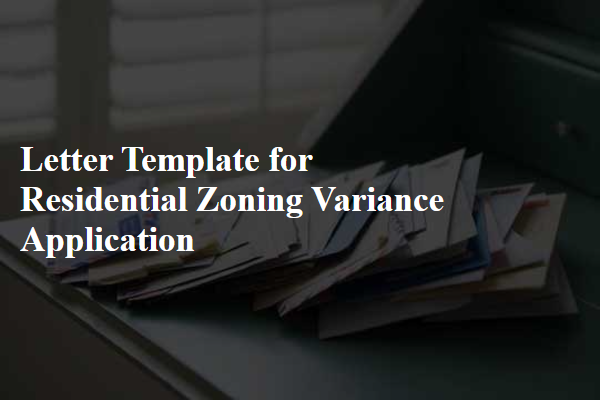
**Applicant's Information**
The applicant's information section of a residential zoning variance application should contain thorough details to ensure clarity and compliance with local regulations. This includes the applicant's full name, such as Jane Smith, who resides at 123 Maple Street, Springfield. The applicant's contact information, including the phone number, for ease of communication, may include (555) 123-4567 and an email address like jane.smith@email.com to facilitate correspondence. It is essential to provide the property address, such as 456 Oak Avenue, Springfield, indicating the specific site for which the variance is being requested. Further details may include the applicant's relationship to the property, for instance, whether they are the owner or a tenant, along with identification documents or proof of ownership for verification purposes. Adding the date of application submission, for example, March 1, 2023, creates a chronological context for the request.
**Property Details**
The property details section of a residential zoning variance application requires specific information about the location, ownership, and characteristics of the property. For example, the property might be situated at 123 Maple Street, Springfield, Illinois, with a current zoning classification of R-1, which is designated for single-family residential use. The lot size measures approximately 10,000 square feet, allowing for typical development standards such as setbacks, height restrictions, and lot coverage limits. The owner of record is Jane Doe, who purchased the property in March 2021. The application may also include details about the surrounding area, such as nearby schools, parks like Lincoln Park, or commercial zones to provide context for the proposed variance. It is essential to mention the property's unique characteristics, including topography and existing structures, which may necessitate the request for the variance to accommodate specific needs, like building a garage larger than standard dimensions due to limited space on the lot.
**Detailed Description of Request**
A residential zoning variance application seeks approval for modifications to zoning regulations, allowing certain land use alterations. This request specifically addresses the need for a reduced setback of fifteen feet instead of the current requirement of twenty-five feet, enabling the construction of a two-story family home in the Oakwood neighborhood, known for its historic architecture and community gardens. The proposed project aims to accommodate a growing family, providing essential living space while maintaining compliance with aesthetic guidelines set by the local zoning board. Noteworthy factors include local demographic trends indicating an increase in young families seeking to reside in Oakwood. The neighborhood association has highlighted a need for more family-oriented housing options, reinforcing the community's commitment to growth and revitalization. Additionally, the chosen location, at 120 Maple Street, has existing structures nearby that demonstrate similar variances, underscoring a precedent for flexibility in the neighborhood's development approaches while still respecting overarching zoning policies. This variance application includes comprehensive plans and expert assessments to ensure minimal impact on surrounding properties and uphold the area's historical integrity.
**Justification for Variance**
A residential zoning variance application requires a compelling justification to demonstrate the necessity for deviation from standard zoning regulations. Specific circumstances unique to the property, such as its size (e.g., measuring only 5,000 square feet against the minimum requirement of 10,000 square feet), shape (e.g., an irregular lot configuration that limits building options), or topography (e.g., a steep slope on a hillside in Lakeview neighborhood), often play a critical role in the request. Additionally, potential impacts on surrounding properties, such as compatibility with existing structures, must be articulated, especially regarding aesthetic harmony within the community characterized by a mix of single-family and multi-family homes built in the early 1990s. Any prior use of the property, such as a converted garage used as a living space that aligns with neighborhood standards, can substantiate the request, ensuring that it does not create undue disruption or negative consequences for the local area governed by the city zoning board.
**Supporting Evidence and Documentation**
Residential zoning variance applications require solid supporting evidence and documentation to establish the need for deviation from standard zoning regulations. Detailed property surveys, illustrating the current lot dimensions and proximity to neighboring structures, can provide a clear view of how the proposed changes integrate with the surrounding community in areas such as Springfield, Illinois. Photographs highlighting the existing landscape and dwelling conditions, along with a site plan that outlines the intended modifications, can bolster the application. Additionally, letters of support from nearby residents, demonstrating community backing, can strengthen the case for the variance request. Local zoning ordinances, reference to similar variance approvals in the vicinity, and expert testimonials from urban planners or architects may further substantiate the claim for necessity, emphasizing how the variance aligns with community development goals.
Letter Template For Residential Zoning Variance Application Samples
Letter template of residential zoning variance request for home expansion
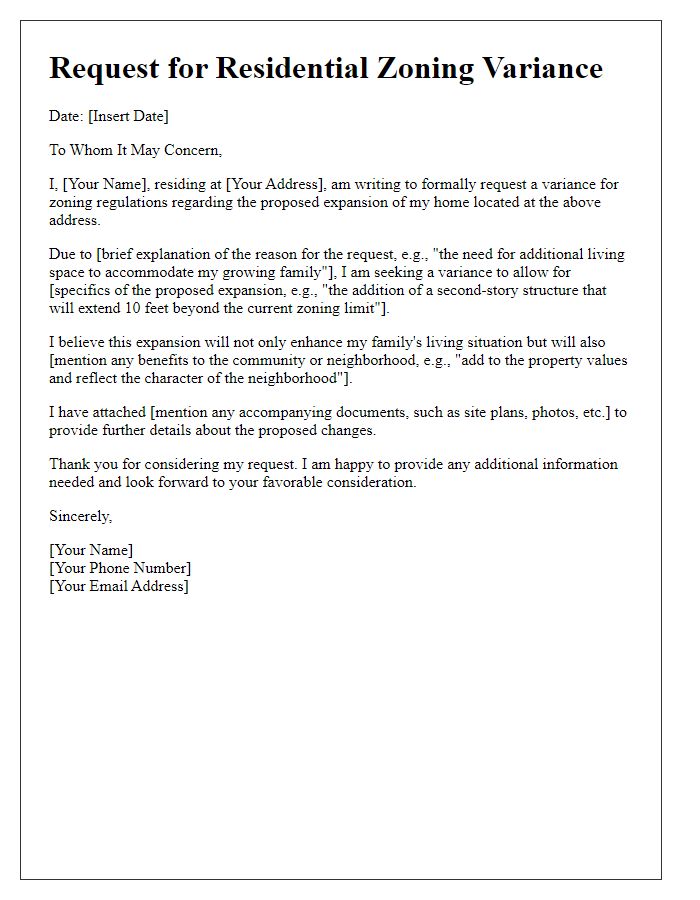
Letter template of residential zoning variance appeal for property renovation
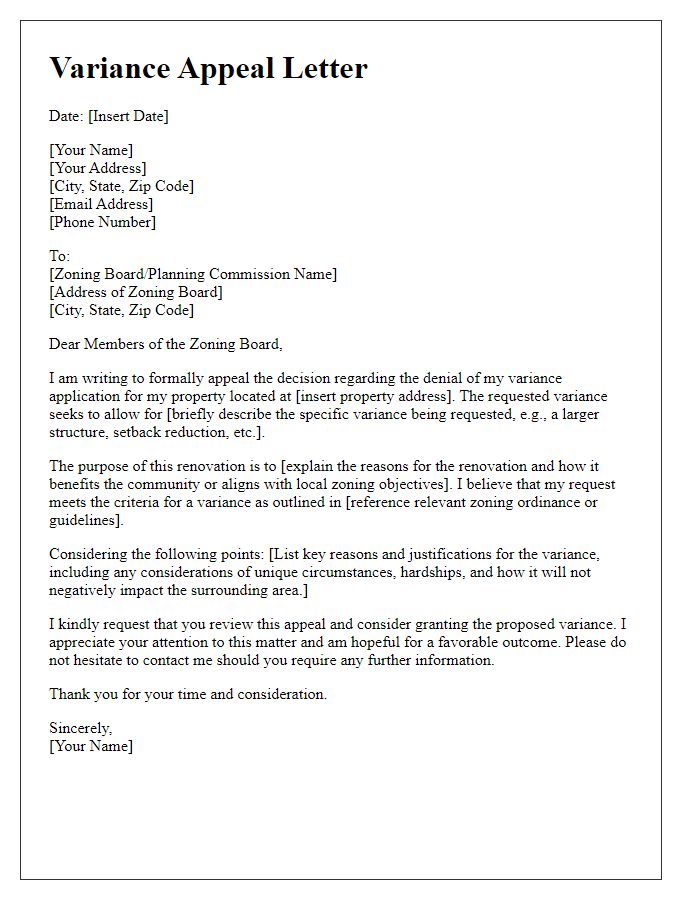
Letter template of residential zoning variance application for accessory dwelling unit
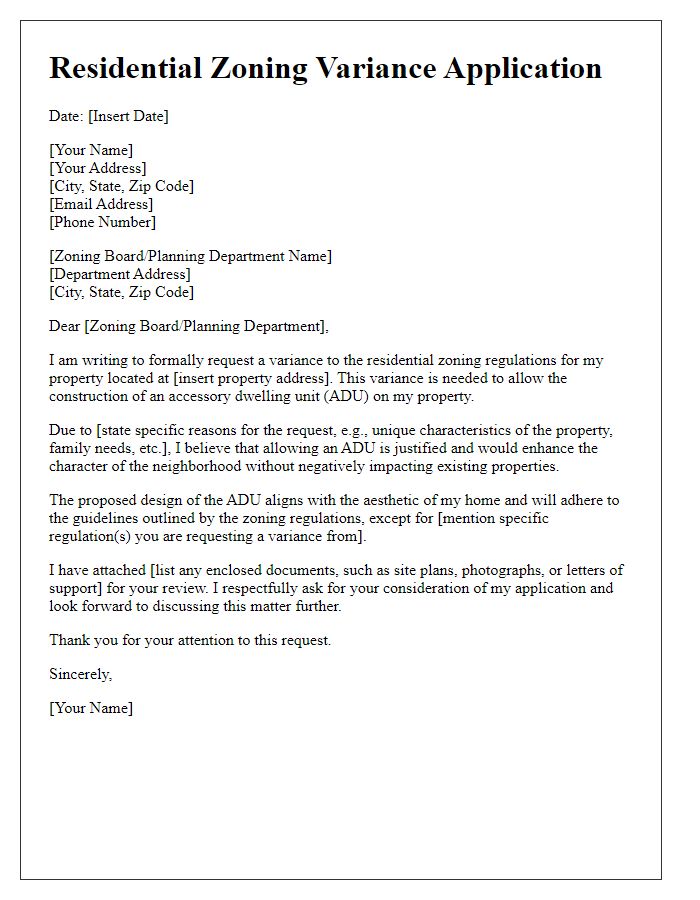
Letter template of residential zoning variance proposal for new construction
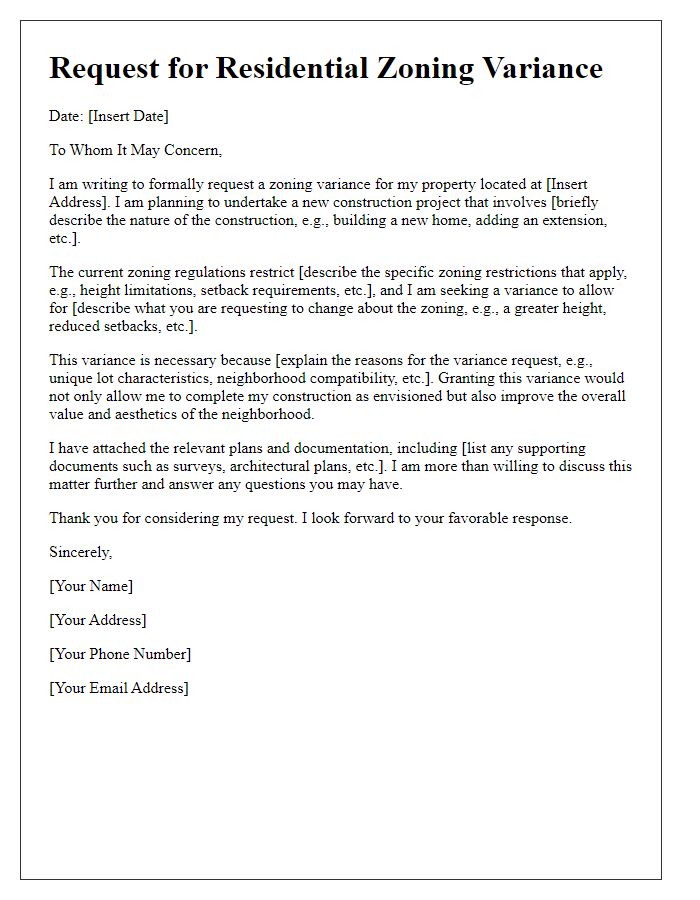
Letter template of residential zoning variance inquiry for land use modification

Letter template of residential zoning variance submission for setback adjustment
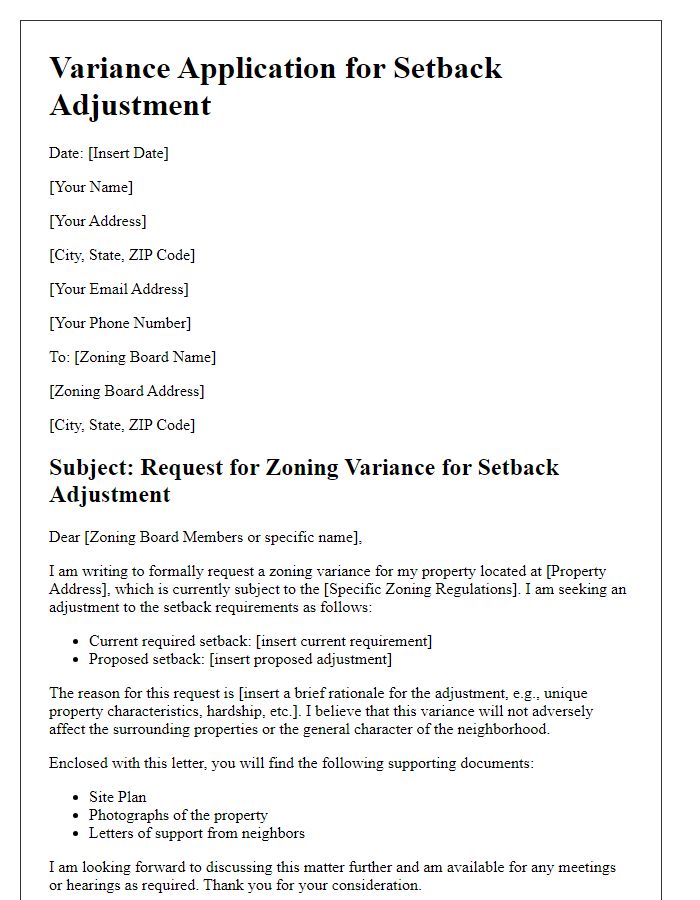
Letter template of residential zoning variance application for home business use
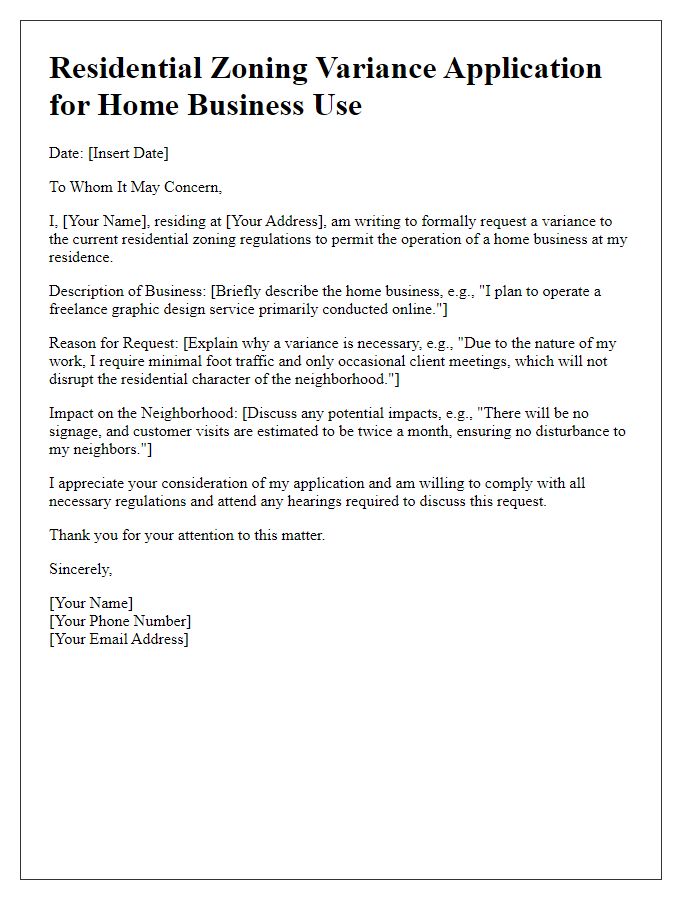
Letter template of residential zoning variance request for lot coverage increase
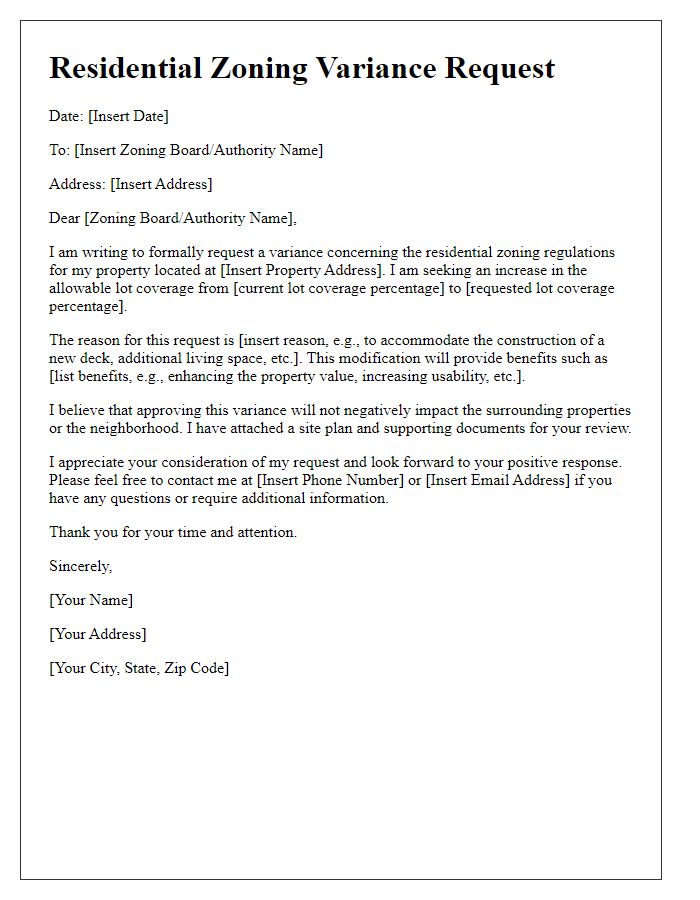
Letter template of residential zoning variance appeal for nonconforming use
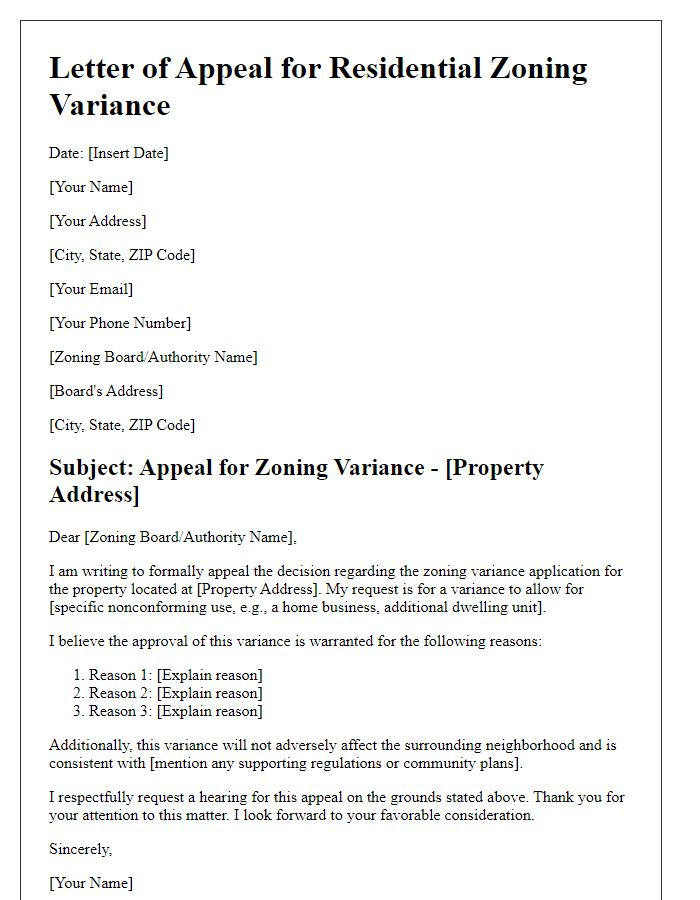

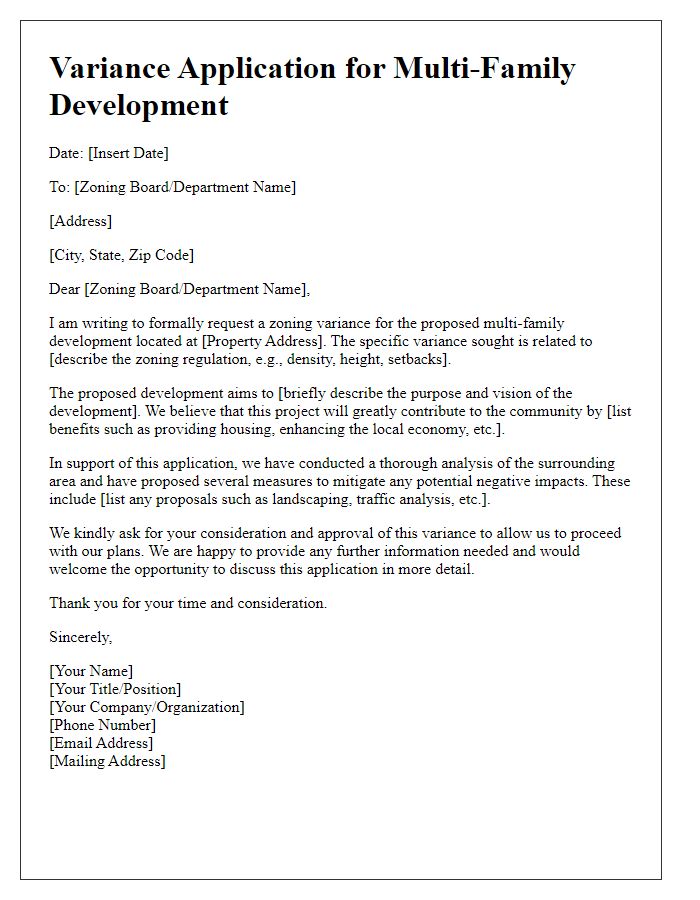


Comments